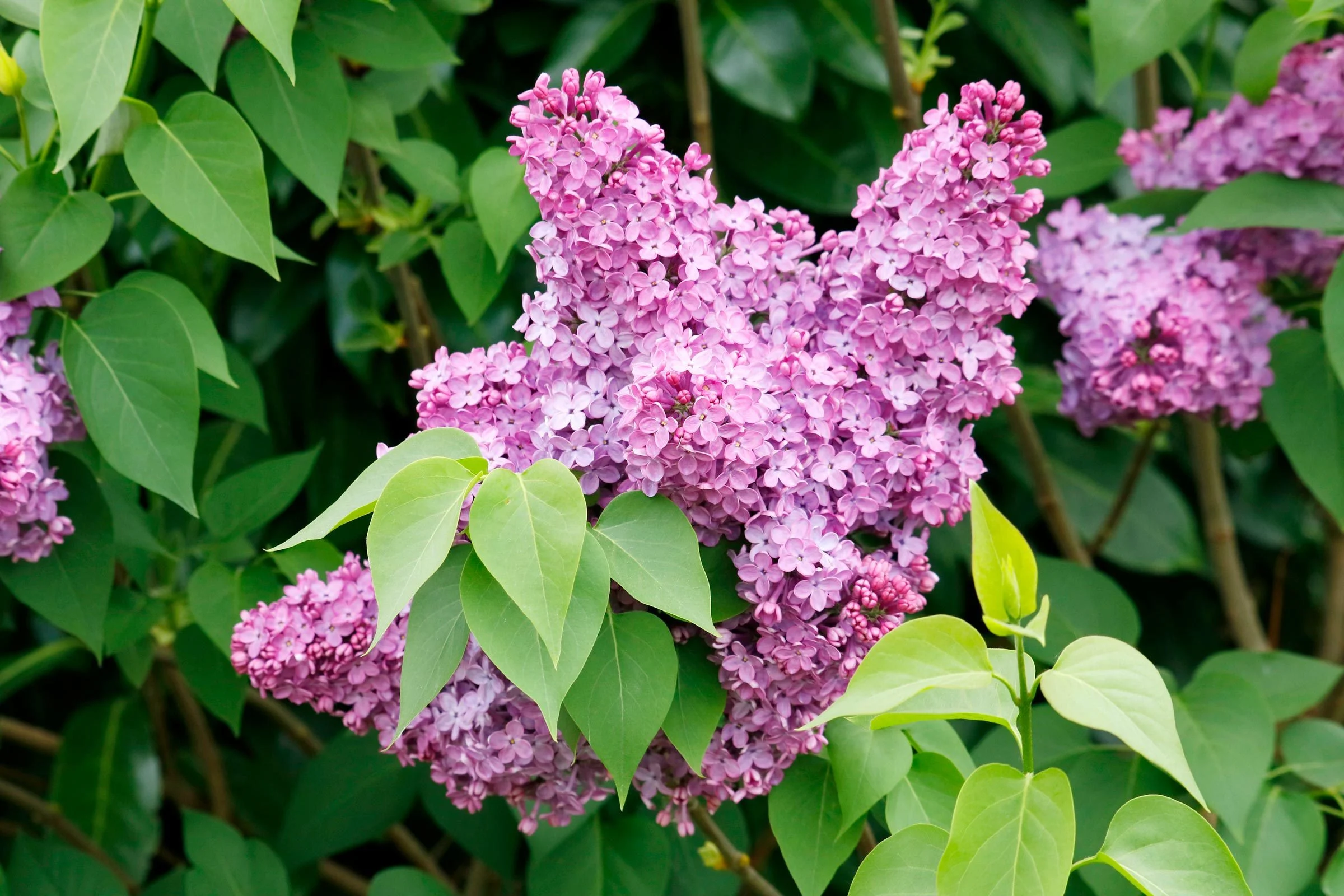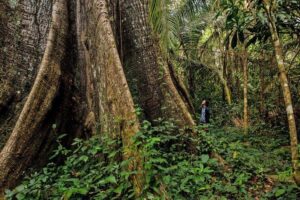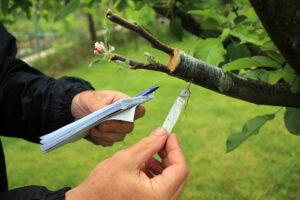Lilac Bushes vs. Lilac Trees: Understanding the Differences and Choosing the Right Option for Your Garden
When you’re looking to add the intoxicating fragrance and stunning blooms of lilacs to your landscape, you’ll quickly encounter a common question: should you choose a lilac bush or a lilac tree? Despite their similar names and characteristics, these two forms of lilacs have distinct differences that can significantly impact your gardening experience and landscape design.
In this comprehensive guide, we’ll explore everything you need to know about lilac bushes versus lilac trees, from their botanical classifications and growth habits to maintenance requirements and aesthetic impact. By the end, you’ll have all the information necessary to choose the perfect lilac variety for your garden and growing conditions.
Understanding Lilacs: A Brief Introduction
Before diving into the differences between lilac bushes and trees, it’s helpful to understand what lilacs actually are. Lilacs belong to the genus Syringa in the olive family (Oleaceae). These deciduous woody plants are beloved for their cone-shaped clusters of fragrant flowers that typically bloom in spring, filling the air with their sweet, distinctive scent.
Originally native to Eastern Europe and Asia, lilacs have been cultivated for centuries and have become a staple in American gardens since the colonial era. Their cultural significance, combined with their beauty and relatively easy care, has made them enduringly popular across the United States, particularly in northern and central regions where winter chill hours support abundant blooming.
Botanical Classifications: What Makes a Lilac Bush Different from a Lilac Tree?
The distinction between lilac bushes and lilac trees isn’t always clear-cut from a botanical perspective, as the difference often comes down to growth habit and training rather than strict taxonomic classification.
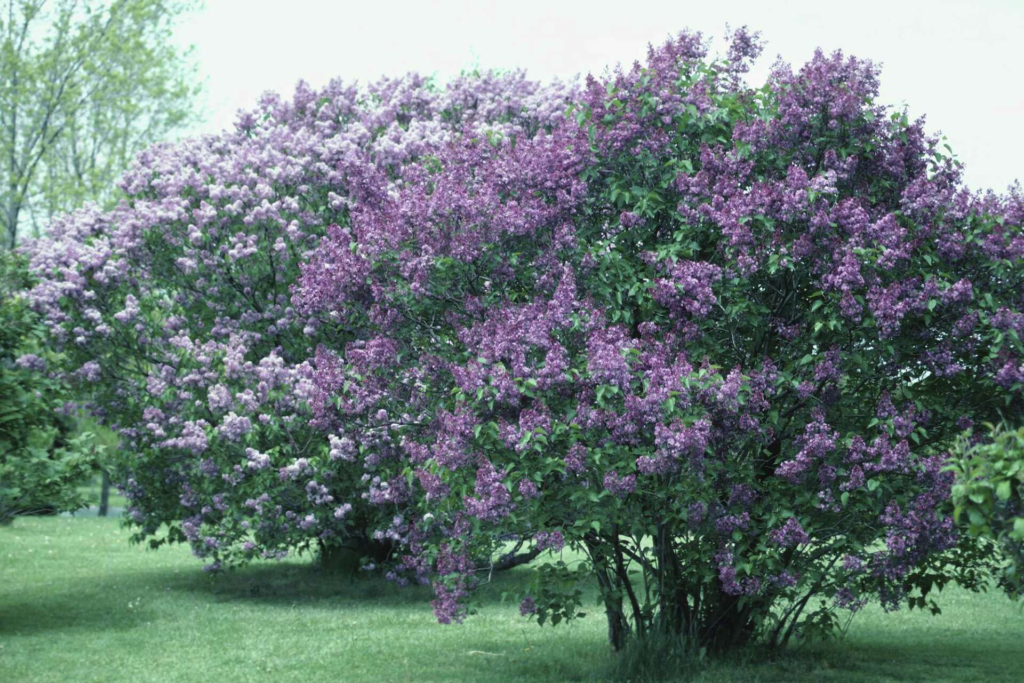
Lilac Bushes
Lilac bushes, the more common form, typically refer to multi-stemmed lilac plants that grow outward as much as upward. The common lilac (Syringa vulgaris) and many of its cultivars naturally grow as bushes, with multiple stems emerging from the base of the plant. These bushes generally range from 8 to 15 feet in height and spread, creating a substantial presence in the landscape.
Bush lilacs tend to have a more natural, informal appearance with dense foliage that extends closer to the ground. They form thickets over time as they send up new shoots from the base, gradually expanding their footprint if not pruned back.
Lilac Trees
Lilac trees, by contrast, typically refer to single-stemmed lilac plants with a more defined trunk and a higher canopy. While some lilac species naturally grow with a more tree-like habit, many “lilac trees” on the market are actually standard or tree forms of bush lilacs that have been specifically trained and pruned to grow with a single trunk.
Japanese tree lilacs (Syringa reticulata) are true tree-form lilacs that naturally grow with a single trunk and can reach heights of 20-30 feet. They produce cream-colored flowers that, while beautiful, lack the intense fragrance of common lilacs.
Additionally, dwarf Korean lilacs (Syringa meyeri ‘Palibin’) and other compact varieties are sometimes grafted onto hardy rootstock to create small ornamental trees with a lollipop-like appearance.
Growth Patterns and Characteristics
The physical differences between lilac bushes and trees extend beyond their basic structure, influencing everything from their mature size to their blooming patterns.
Lilac Bush Growth Patterns
Lilac bushes typically:
- Grow with multiple stems from ground level
- Spread outward as well as upward
- Tend to have a rounded or vase-shaped habit
- Produce new shoots (suckers) from the base and roots
- Reach mature heights of 8-15 feet with similar spread
- Take 3-5 years to reach flowering maturity
- Bloom profusely throughout the shrub
Lilac Tree Growth Patterns
Lilac trees typically:
- Develop a defined trunk with branches starting higher up
- Grow more upright with a more contained spread
- Form a more oval or umbrella-shaped canopy
- Produce fewer or no suckers from the base
- Reach heights of 15-30 feet depending on variety
- May take 5-7 years to reach full flowering maturity
- Concentrate blooms in the upper canopy
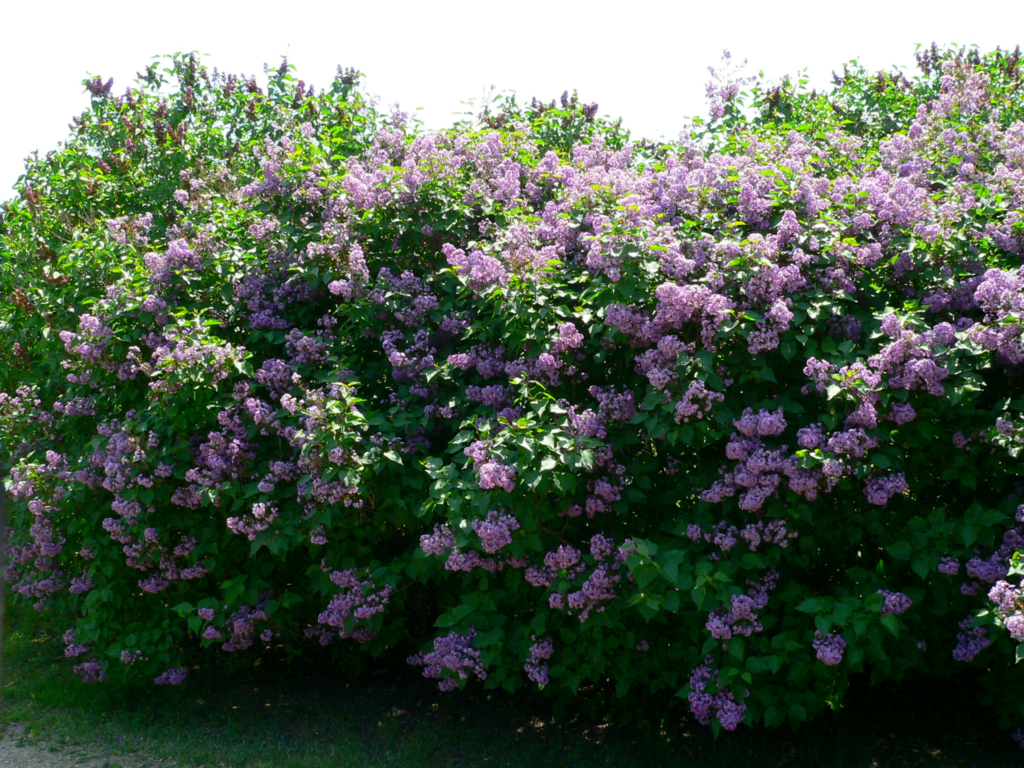
Comparison of Popular Lilac Varieties
Understanding specific varieties can help you make an informed decision about which form might work best in your landscape. Here’s a detailed comparison of some popular lilac varieties in both bush and tree forms:
| Variety | Growth Form | Mature Height | Spread | Flower Color | Fragrance Level | Bloom Time | Cold Hardiness |
|---|---|---|---|---|---|---|---|
| Common Lilac (Syringa vulgaris) | Bush | 10-15 ft | 8-12 ft | Purple | Very Strong | Mid-Spring | USDA Zones 3-7 |
| Miss Kim Lilac (S. pubescens subsp. patula) | Bush | 4-9 ft | 5-7 ft | Lavender-Blue | Strong | Late Spring | USDA Zones 3-8 |
| Dwarf Korean Lilac (S. meyeri ‘Palibin’)Bush/Tree4-5 ft (bush), 8-10 ft (tree)5-7 ftPink-PurpleMediumMid-SpringUSDA Zones 3-7Japanese Tree Lilac (S. reticulata)Tree20-30 ft15-25 ftCreamy WhiteMildEarly SummerUSDA Zones 3-7Ivory Silk Tree Lilac (S. reticulata ‘Ivory Silk’) | Tree | 20-25 ft | 15-20 ft | White | Mild | June | USDA Zones 3-7 |
| Bloomerang Lilac (S. x ‘Penda’) | Bush | 4-6 ft | 4-5 ft | Purple | Strong | Spring + Fall | USDA Zones 3-7 |
Landscape Uses and Design Considerations
The structural differences between lilac bushes and trees make them suitable for different landscape applications. Your choice should be guided by your specific garden needs and aesthetic preferences.
Where Lilac Bushes Shine
Natural Screening: With their dense, multi-stemmed habit, lilac bushes make excellent informal hedges or privacy screens. When planted in a row, they create a fragrant barrier that can block unwanted views while adding seasonal interest.
Foundation Plantings: Smaller lilac bush varieties work well as foundation plantings, softening the lines of your home without overwhelming the architecture. Dwarf cultivars like ‘Miss Kim’ or ‘Tinkerbelle’ are particularly suitable for this purpose.
Mixed Borders: Lilac bushes integrate beautifully into mixed shrub borders, providing structural height and spectacular spring interest. Their informal growth habit blends well with other flowering shrubs and perennials.
Wildlife Gardens: The dense structure of lilac bushes provides nesting sites for birds, while their fragrant flowers attract butterflies, bees, and other pollinators. The National Wildlife Federation recognizes lilacs as valuable additions to wildlife-friendly landscapes. You can learn more about creating pollinator-friendly gardens with native and non-native flowering plants on the U.S. Forest Service website.
Where Lilac Trees Excel
Specimen Planting: With their distinctive form and elevated canopy of blooms, lilac trees make stunning specimen plants for lawns or garden focal points. Their architectural presence draws the eye and creates vertical interest.
Patio Shade: The higher canopy of a lilac tree allows for seating or planting underneath, making it ideal for small patios or gathering spaces where you want both shade and beauty.
Street Trees: Japanese tree lilacs, with their tolerance for urban conditions and resistance to pollution, make excellent street trees or parkway plantings. Their non-invasive root systems won’t damage sidewalks or underground utilities.
Small Spaces: In tight quarters where ground-level spread is limited, a lilac tree can provide the beauty and fragrance of lilacs without taking up as much horizontal space as a bush form would require.
Care and Maintenance Differences
Both lilac bushes and trees share basic care requirements, including a preference for full sun, well-drained soil, and adequate air circulation. However, there are some notable differences in their maintenance needs.
Lilac Bush Maintenance
Pruning Requirements: Lilac bushes benefit from regular pruning to maintain their shape and encourage abundant flowering. The best time to prune is immediately after flowering, as they bloom on old wood. Remove up to one-third of the oldest stems at ground level each year to rejuvenate the plant and improve air circulation.
Sucker Control: Bush lilacs tend to produce suckers from the base and roots, which can be a blessing if you want the plant to naturalize but a maintenance challenge if you prefer a more contained form. Regular removal of unwanted suckers is often necessary.
Renewal: Every 5-7 years, consider a more dramatic renewal pruning, removing the oldest third of stems entirely to stimulate fresh growth and maintain vigor.
Space Management: Because lilac bushes spread outward as well as upward, you’ll need to plan for adequate space in your garden. Crowding leads to poor air circulation, which can increase disease problems.
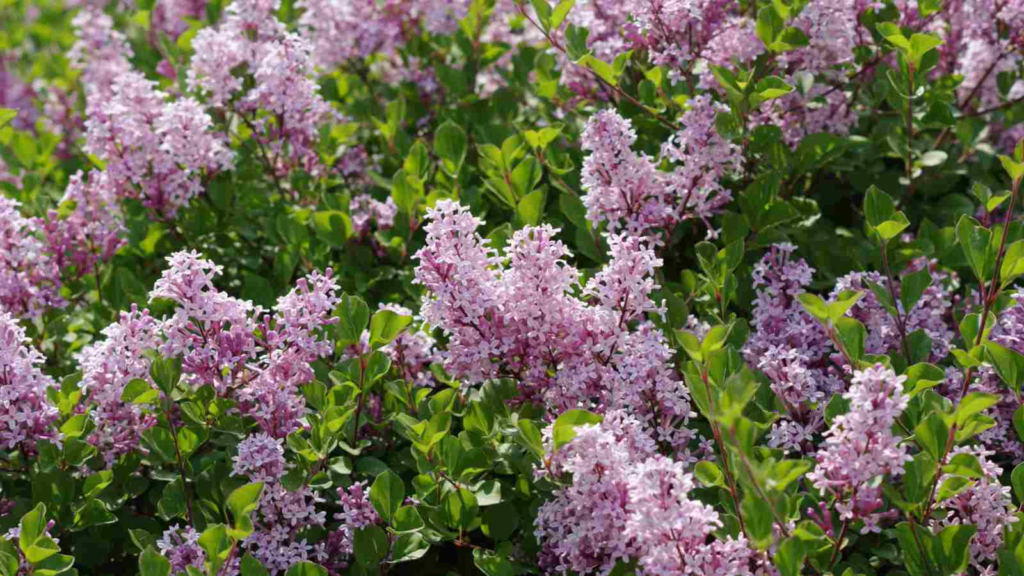
Lilac Tree Maintenance
Structural Pruning: Lilac trees require more strategic pruning to maintain their tree form. This includes removing lower branches and suckers to preserve the clean trunk and keeping the canopy balanced through selective thinning.
Height Control: Standard or grafted tree lilacs may need occasional pruning to control height, especially if they’re being maintained as small ornamental trees. This should be done gradually to avoid stimulating excessive sucker production.
Trunk Protection: The exposed trunk of a lilac tree can be vulnerable to damage from lawnmowers, string trimmers, and winter sunscald. Consider using trunk guards or mulch rings to protect the bark.
Stake Support: Young lilac trees may need staking for the first few years to develop a straight, strong trunk, particularly in windy locations.
Bloom Time and Fragrance Considerations
One of the primary reasons people add lilacs to their gardens is for their remarkable fragrance and beautiful blooms. Both bush and tree forms offer these benefits, but with some variations.
Bloom Characteristics of Lilac Bushes
Traditional bush lilacs typically bloom for about two weeks in spring, usually May in most northern states. Their flowers are produced throughout the shrub, creating a mass of color and scent that can be appreciated from all angles. The common lilac (S. vulgaris) and its many cultivars offer the strongest, most nostalgic lilac fragrance.
Modern reblooming bush lilac varieties like ‘Bloomerang’ provide an initial spring display followed by a lighter repeat bloom in summer and fall, extending the season of enjoyment.
Bloom Characteristics of Lilac Trees
Japanese tree lilacs bloom later than common lilacs, typically in June when most other lilacs have finished flowering. This extended bloom sequence can be a benefit if you’re trying to create a continuous display of flowering trees and shrubs throughout the spring and early summer.
The flowers of tree lilacs, particularly Japanese tree lilacs, tend to be larger and more open in structure than bush lilac blooms. While beautiful, they generally have a milder fragrance that some describe as more privet-like than the classic lilac scent.
For grafted tree forms of common lilacs, the flowers retain their characteristic fragrance but may be more difficult to appreciate up close since they’re positioned higher in the canopy.
Climate Adaptability and Regional Considerations
Most lilacs perform best in USDA Hardiness Zones 3-7, where they receive the winter chill hours necessary to stimulate abundant blooming. However, there are some differences in regional adaptability between bush and tree forms.
Regional Adaptability of Lilac Bushes
Common lilac bushes (S. vulgaris) are extremely cold-hardy, thriving in northern states where winter temperatures regularly dip well below freezing. In fact, they often perform better in regions with cold winters and moderate summers.
For warmer regions (Zones 7-8), consider heat-tolerant bush lilac varieties like ‘Miss Kim’ (S. pubescens subsp. patula), ‘George Eastman’, or ‘Lavender Lady’, which require fewer chill hours to bloom successfully.
Regional Adaptability of Lilac Trees
Japanese tree lilacs (S. reticulata) and their cultivars like ‘Ivory Silk’ share the cold hardiness of their bush cousins but tend to be more adaptable to urban conditions and a wider range of soil types. They’re also less susceptible to powdery mildew in humid climates.
Tree forms of common lilacs may struggle in the deep South and Gulf Coast regions where winter chill is insufficient, but Japanese tree lilacs can sometimes succeed in these warmer zones with proper siting and care.
Making the Right Choice for Your Garden
When deciding between a lilac bush and a lilac tree, consider these key factors:
Space and Scale
Assess your available space both horizontally and vertically. If you have limited ground space but ample vertical room, a lilac tree might be the better choice. For larger areas where you want a substantial presence, a lilac bush or group of bushes could be more appropriate.
Landscape Function
Consider what role you want your lilac to play. Need a screen or hedge? Choose bush forms. Looking for a specimen plant or small shade tree? A tree form would be more suitable.
Viewing Distance
Think about where you’ll be experiencing your lilac most often. If you want to enjoy the fragrance up close from a patio or walkway, a bush form brings the flowers to nose level. If you’re viewing from a distance, the elevated blooms of a tree form might create more visual impact.
Maintenance Capacity
Be honest about your willingness and ability to maintain your lilac. Bush forms generally require more regular pruning to stay in bounds, while tree forms need more specialized structural pruning but may need it less frequently.
Bloom Preferences
If the classic, intensely fragrant lilac experience is your priority, choose a bush form of Syringa vulgaris or its hybrids. If you’re more interested in extending your flowering season or creating architectural interest, a Japanese tree lilac might be preferable.

DIY: Creating Your Own Lilac Tree from a Bush
If you’re drawn to the look of a lilac tree but have a bush variety you love, you can train your own tree form through selective pruning. This process takes patience but allows you to combine the flowering characteristics you prefer with the form you desire.
To create a tree form from a lilac bush:
- Select a young, vigorous lilac bush with strong, upright stems.
- Choose the strongest, most central stem to become your trunk, and remove all other stems at ground level.
- Remove all branches from the lower half to two-thirds of your selected trunk, creating a clean stem.
- Allow the upper branches to develop, but thin them to create an open, balanced canopy.
- Continue to remove any suckers that emerge from the base promptly to maintain the tree form.
- Be patient—this transformation will take several years to achieve the mature look you’re seeking.
Conclusion: Embracing the Beauty of Lilacs in Any Form
Whether you choose a lilac bush or tree, you’re adding a plant with a rich cultural history, spectacular blooms, and unforgettable fragrance to your landscape. Both forms have their unique advantages and challenges, but both will reward you with decades of spring beauty when properly sited and cared for.
Many lilac enthusiasts find that incorporating both forms into their landscape provides the best of both worlds—the immersive fragrance experience of bush lilacs combined with the architectural elegance of tree forms. Whatever you choose, take the time to select varieties well-suited to your climate and to prepare the planting site properly, setting the stage for generations of enjoyment.
Remember that lilacs are long-lived plants that can become cherished landmarks in your garden, often outliving the gardeners who plant them. By understanding the differences between bush and tree forms and making an informed choice, you’re creating a legacy of beauty that may well extend beyond your own time tending the garden.
